Sikkim
About Sikkim
Sikkim, located in the north-eastern region is the smallest state in India. Travelling across this Himalayan state is particularly highlighted by the dramatic contouring of the scenery from thick woodlands to colourful meadows to few barren patches to the panoramic views of the snowcapped mountains. Occupied by warm-hearted people offering some of the best hospitality and boasting of magnificent treks, snow activities and scenic views, Sikkim is truly a destination people fall in love with! The third highest peak in the world and jewel of the state, Kanchenjunga is visible from almost anywhere you stand. Accessible mainly via road from the neighbouring states, the newly inaugurated Pakyong airport near the capital city of Gangtok highlights government efforts towards better connectivity. Until 1975, when it was merged with India, Sikkim functioned as an autonomous kingdom with its own monarchy. Since then, it has become an integral part of India with a distinctive culture which has evolved into a multifaceted one. Influenced by the peaceful coexistence of the dominant Nepalese community with the native Bhutias and the immigrant Lepchas, one will find many monasteries and Hindu shrines close to each other.
Gangtok
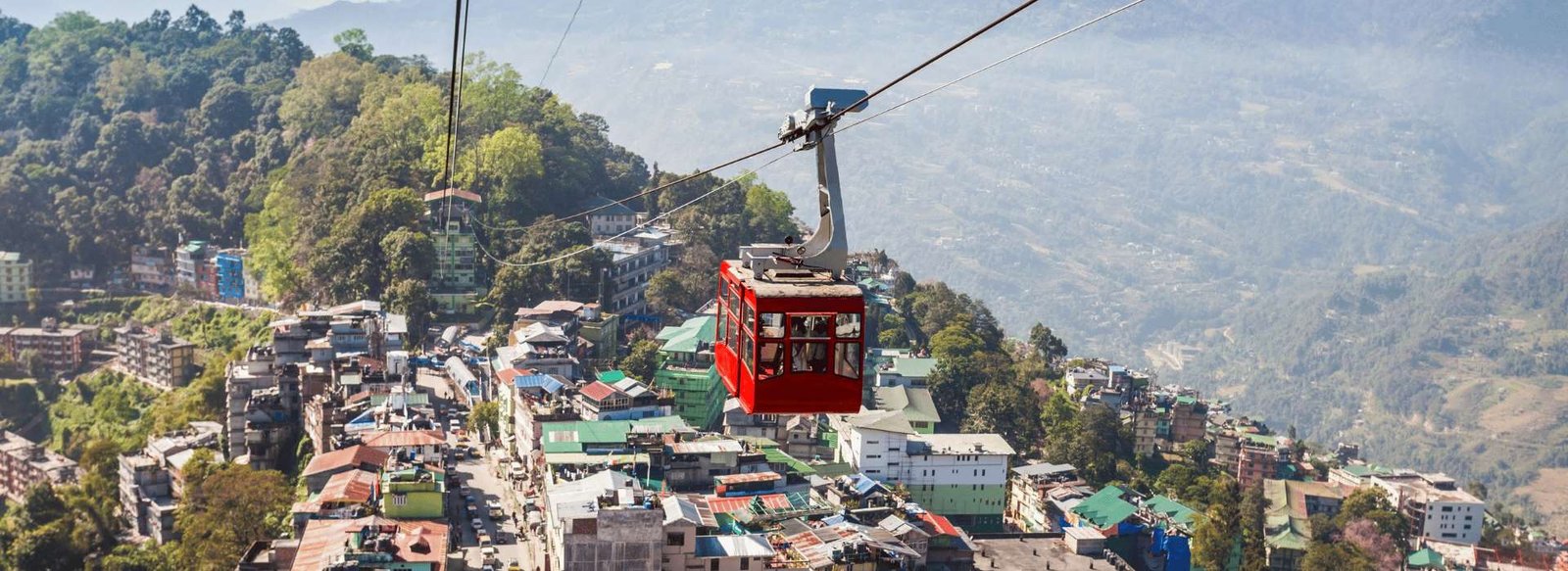
Incredibly alluring, pleasantly boisterous and wreathed in clouds – Gangtok, the capital of Sikkim, is one of the most popular hill stations in India. Lying at the height of 1650 m above sea level, the town during its bright sunny days offers spectacular views of Mt. Kanchenjunga. Gangtok is a base for adventure enthusiasts comprising of trekkers and campers to the Himalayan mountain ranges. During the months of March to Mid-May, blooming of wild Rhododendrons transform the surrounding regions in vast fields of colourful carpets.Its name meaning hill-top, Gangtok can be safely said to be one of the most beautiful hill stations in the country. With everything in just the right amount from a blend of cultural identities to urbanisation, Gangtok is a breathing and dynamic bit of paradise of the northeast. Gangtok and its surrounding regions are abundant in natural beauty and have various natural attractions such as the Tsomgo Lake, Ban Jhakri falls, Tashi viewpoint and more. Other places to visit include many famous religious sites such as the Enchey Monastery, Ganesh Tok, Do Drul Chorten Rumtek Monastery, etc. Also, river Teesta is one of the best spots for white water rafting in North East India.
Things to Do
Nathula Pass
Nathula, one of the highest motorable roads in the world, is a mountain pass in the Himalayan peaks that co-joins Sikkim and China. Situated on the Indo-Tibetan border 14450 ft. above sea level, Nathu La is one of the most important Himalayan passes in the country. Nathu means ‘listening ears’, and La means ‘pass’. Nathula is one of the three open trading border posts between India and China and is famous for its picturesque beauty and beautiful environment. The temperature here remains low for most parts of the year, and it becomes a hotspot for tourists during summer.
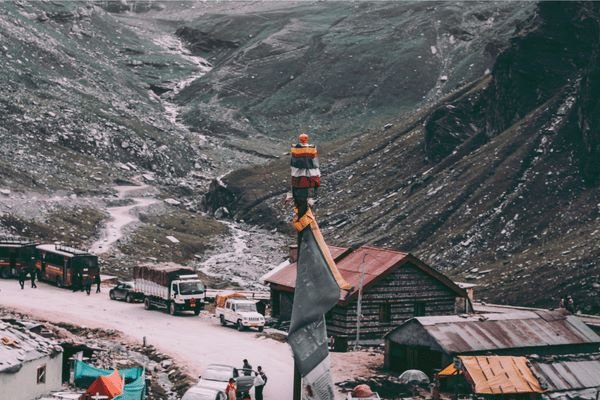
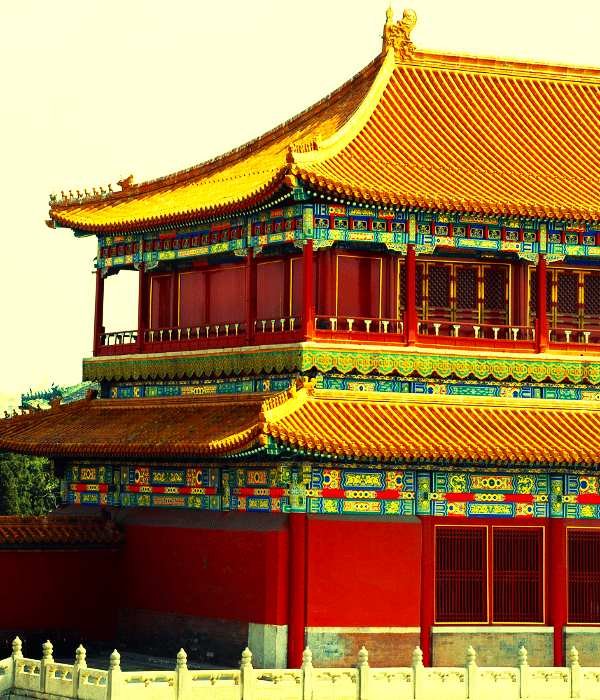
Rumtek Monastery
The Rumtek Monastery is one of the largest and most significant monasteries in Sikkim, perched on top of a hill 23 km from Gangtok. Originally called as the Dharma Chakra Centre, it belongs to the Kargyu sect of Buddhists who originated in Tibet in the 12th century. Verdant green mountains surround the monastery and thus serves as a visual treat besides being a focal point for spiritual solace. If you climb on top to the Rumtek Monastery, you can have a breathtaking view of the whole Gangtok town situated right opposite the hill. Besides this, the architecture of the striking monastery is one of the finest in the world.The glorious Rumtek Monastery houses a beautiful shrine temple and a monastery for the monks which were established with the aim of spreading the Buddhist teachings around the world. The sublime structure has a walkway around it on which the monks, pilgrims and visitors perform Kora (a circuit round of the monastery). The splendid Rumtek Monastery has preserved a golden stupa and various other sculptures which belonged to the 16th Karmapa. It also serves as the storehouse for many uniques objects besides storing some of the world’s unique religious scriptures. The massive prayer hall inside the stunning monastery is a place worth seeing that is decorated with splendid murals, statues and thangkhas.
Tsomgo Lake
Perched between the mountains at a dizzying height of 12400 ft above sea level, the Tsomgo Lake is one of the few high-altitude lakes in India situated on the Gangtok – Nathu La highway. Also popularly known as Changu Lake, it is a part of every tourist’s itinerary and for a good reason – the overwhelming scenic beauty. Enveloped by steep snow-capped mountains and resting between a bright green carpet of alpine forests, the charming beauty of Tsogmo Lake is bound to leave you in awe. The lake’s mesmerising scenic allure combined with its legendary significance to the locals definitely makes it a must visit attraction of Sikkim.Tsomgo Lake is a glacial lake that derives its water from the melting snows of the mountains around it. This glacial lake is famous for its colour changing waters. Monsoons see a bright aquamarine lake whereas, in the winters, it freezes into a translucent cover of ice. As the summer approaches in mid-May, the periphery of this lake is dotted with a thousand blossoming flowers that lend the waters a riot of vibrant colours. In the Bhutia language, ‘Tso’ means lake and ‘Mgo’ mean head and essentially means ‘source of the water’, holding immense religious and cultural significance to the Bhutia people. Considered as a sacred lake by the Sikkimese, Changu Lake is associated with many myths and legends. They say the Buddhist monks used to analyse the colour of the lake to forecast the future!
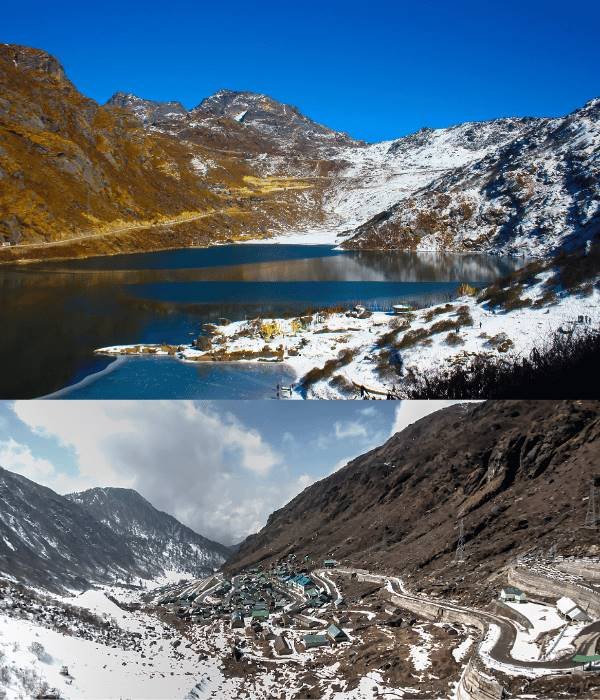
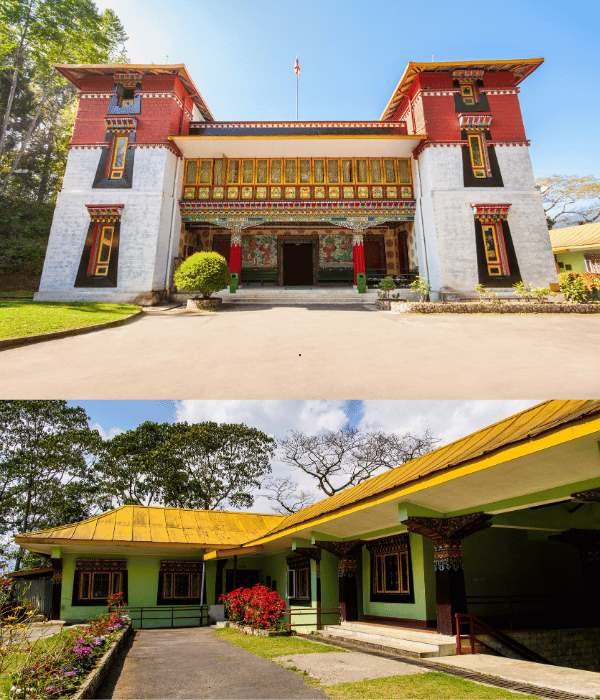
Namgyal Institute of Tibetology
One of the very few of its kind, Namgyal Institute of Tibetology is an abode of centuries-old Tibetan-Buddhist culture and its history. NIT preserves the glorious past of the country, the religion and its precious culture with utmost dedication and that shows in the excellent collection in the museum and the library which are the main attractions here. As important as its role is for the pursuers of Asian culture and Buddhist studies, with its quiet and serene charm, it is a paradise for the tourists as well, especially for the occasional history-enthusiast. Photography is not allowed inside, but you can take some time off technology and take in all you want with the lens of your eyes.In spite of being primarily a place for study and research of Tibetan and Buddhist culture, The Namgyal Institute has emerged as a major tourist attraction in Gangtok. It promotes and supports the study, research, and preservation of Tibetan history, art, literature, architecture, religion, philosophy and anything and everything else that comes with that. With a foundation stone laid by the great Dalai Lama himself, Namgyal Institute of Tibetology is among the pioneer of preservation and promotion of Tibetan art and literature.
North Sikkim

One of the most uninhabited areas of the country, yet extremely beautiful and charming, North Sikkim shares its boundary with China and Nepal.Mangan is the headquarters of the North Sikkim district. It is one of the most mystically beautiful though unexplored areas due to the harsh conditions found here. Located at an altitude of 956 meters the town of Mangan serves as a base for trekking and hiking trips in the mountains and forests. North Sikkim is famous for the Gurudongmar Lake which is one of the highest lakes of India. It also has religious importance. Apart from lakes, there are some important monasteries in this area too.

Yumthang Valley
The popular Yumthang Valley in North Sikkim is located 140 km north of Gangtok. Famous as the “Valley of flowers”, this is a rare and exotic location with hot springs, rivers, yaks and lush green meadows. Situated at an elevation on 3564 metres, this stunning valley is a paradise for nature lovers as it houses the Shingba Rhododendron Sanctuary which has over 24 species of Rhododendron flowers (the state flower) blooming from late February to mid-June.Yumthang Valley is closed to tourists between December and March due to the heavy snowfall in the region. A few hot springs are situated in Yumthang Valley, which is often visited by tourists as they are believed to have miraculous healing power. Apart from a cosmic green meadow, plush green forest abundant in Pine and silver fir trees fills the area. On your way towards Yumthang Valley, you can see gushing waterfalls and streams along with a splendid view of peaks with Pauhunri and Shundu Tsenpa.
Thangu Valley
Thangu, situated at an altitude of around 3900 m, is a beautiful village which is about two hours’ drive from Lachen. It is a comfortable village where the tourists usually choose to relax before they proceed to trek to Gurugongmar Lake, Muguthang or Cho Lhamu Lake. In Thangu Valley, one can catch a glimpse of the rows of trees and as one goes more upwards, the beautiful view of Tibetan Plateau begins. For nature lovers, this quaint town is a perfect gateway.The ideal time to travel to mesmerising Thangu Valley would be between May and June, during which, the entire valley gets decorated with vibrant alpine flowers, and the heavy snow covers up these beautiful beds of flowers in the cold months between October and March. The spectacular hiking trails from Thangu to places like Chopta Valley and Muguthang enhance the beauty of the village. Since Thangu is near the border between India and China, there is also a big military base present here.
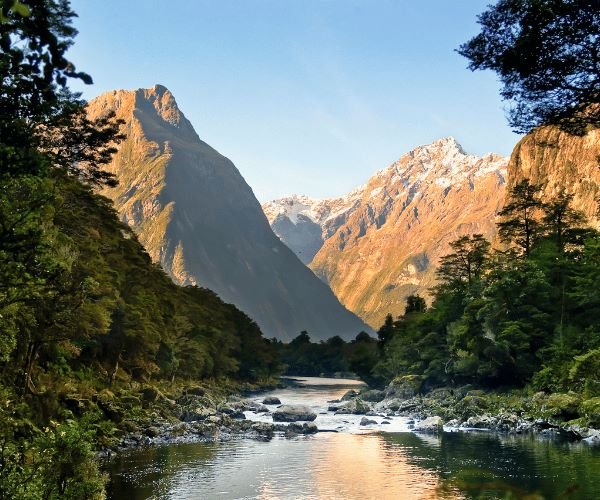

Gurudongmar Lake
Located at the height of 17,100 feet above the sea level, Gurudongmar Lake, located in Sikkim, is one of the fifteen highest lakes in the world. It is also the second highest lake in Sikkim, after the Cholamu Lake located at the height of 18,000 feet. The splendid and scenic beauty of the place is breathtaking and attracts tourists from all across the world. Gurudongmar Lake also has great religious significance attached to it, and the beautiful view of Mount Siniolchu and Kanchenjunga from the lake is a sight to behold and cherish. The water of Gurudongmar Lake is believed to have healing powers, and many tourists carry the water with them on their way back.Encircled by snow-capped mountains and crystal clear icy water, Gurudongmar is considered to be a very holy lake. It is one of the sources of River Teesta, which flows through Sikkim, West Bengal and Bangladesh, to finally merge with the Bay of Bengal. There lies a ‘Sarva Dharma Sthal’ nearby, which is also a very popular place of worship for all religions. The Gurudongmar Lake is located in Lachen, a small and beautiful town in North Sikkim. A night stay at this town is highly recommended before visiting the stunning lake. The strategic location of the mesmerising Gurudongmar Lake and its proximity to other popular attractions further appeals to the tourists, and make it one of the most popular attractions in Sikkim.
West Sikkim
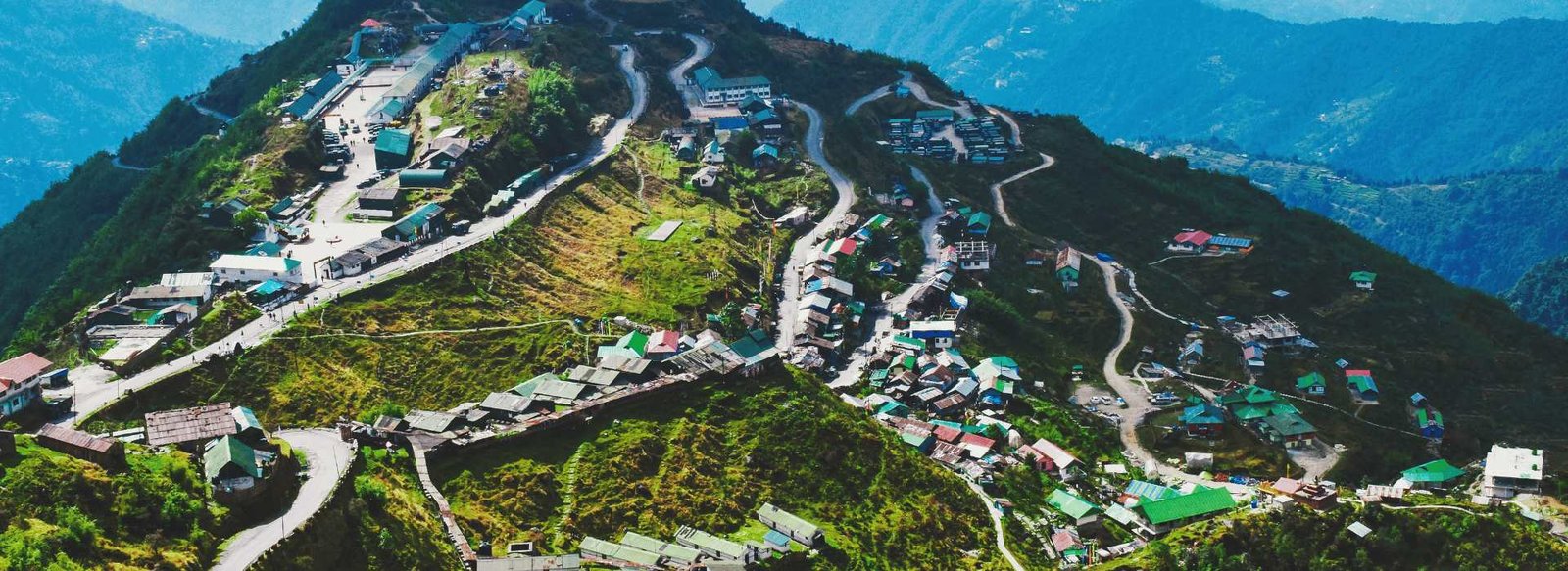
West Sikkim, located at the foothills of Mount Kanchenjunga, offers one of the best views of Southeast face of Mt. Kangchenjunga.West Sikkim offers one of the best views of the south-east face of Mt. Kangchenjunga. This place is also famous for few of the oldest and holiest Buddhist Monasteries of the world. With the beautiful amalgamation of nature and religious history, the calm and peaceful environment of Pelling makes it a famous tourist destination in Sikkim. West Sikkim owes its tranquillity and calmness to the beautiful and age-old monasteries like Sangachoeling and Pemayansgtse Monasteries. The Kchehepalri Lake, situated in the midst of a dense forest is considered holy and is mesmerising to devotees and tourists alike.
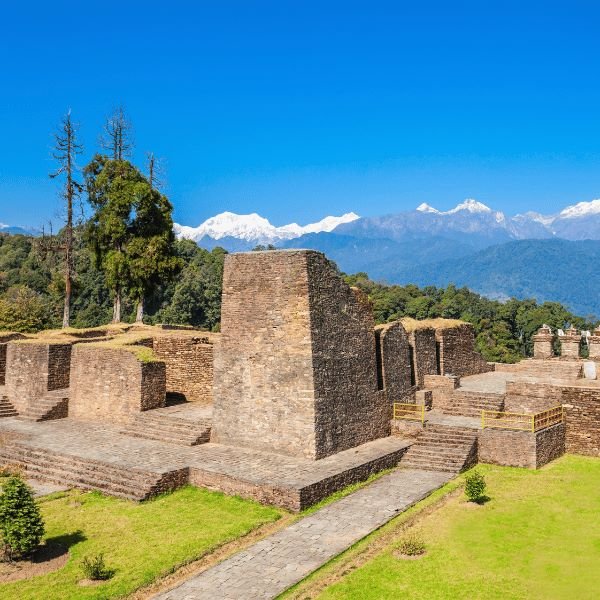
Pelling
Pelling, a beautiful town in the West district of Sikkim, has become the second biggest tourist destination in Sikkim after Gangtok. Located 10 km from Geyzing and 130 km from Gangtok, the main attraction of the place is the breathtaking sight of the Khangchendzonga and the neighbouring peaks. The famous Pemayangste monastery is less than a kilometre from here and is a major tourist hotspot. Pelling also has sites for mountain biking, rock climbing, village tours, meditations, apart from serving as a base for a number of treks in the region. The scenic town of Pelling is a perfect holiday destination for all nature lovers and adventure enthusiasts.Pelling, a beautiful petite town sited at a height of 6800ft was initially covered with wild thick forest which served as home to many indigenous wild animals of that period including Wildman( may not be yeti though). This ridge being situated in between two old Buddhist monasteries (Pemayangtse and Sangacholing) developed into a full-fledged village named Pelling. Today, Pelling is one of the best-chosen tourist hotspots in Sikkim. More than that, Pelling is the heart where all the breathtaking tourist spots of West Sikkim can be visited.
Pemayangtse Monastery
Pemayangtse Monastery is a highly revered Buddhist Monastery situated at Pemayangtse, in the Pelling region of Sikkim. One of the oldest monasteries of the state, it stands tall on a hilltop overlooking the historical Rabdentse ruins, the former capital of the Kingdom of Sikkim. Pemayangtse translates to ‘perfect, sublime lotus’ and is said to represent one of the four networks of nerves (vessels) in the human body. Dedicated to Padmasambhava (Guru Rinpoche who revived Buddhism in Tibet), the striking feature of this monastery are the statues of him and his consorts.Being one of the oldest monasteries in the state, the Pemayangtse Monastery has served as part of the Buddhist pilgrimage circuit in Sikkim for centuries since its completion in 1705. The monastery attends to the Nyingma Order (oldest one of the four schools) of Tibetan Buddhism. The monks here are recognized by the red hats they wear and are chosen amongst the Bhutias of Sikkim! An elevation of 2085 meters (6840 feet) above the sea level provides an iconic and eye-pleasing site for the ancient monastery. Pemayangtse Monastery also serves as the starting point of the popular Dzongri trek route. Pretty sights of the Kangchenjunga massif that includes five eight-thousander peaks, which have been described as Five Treasures of Snow, are visible from the monastery.
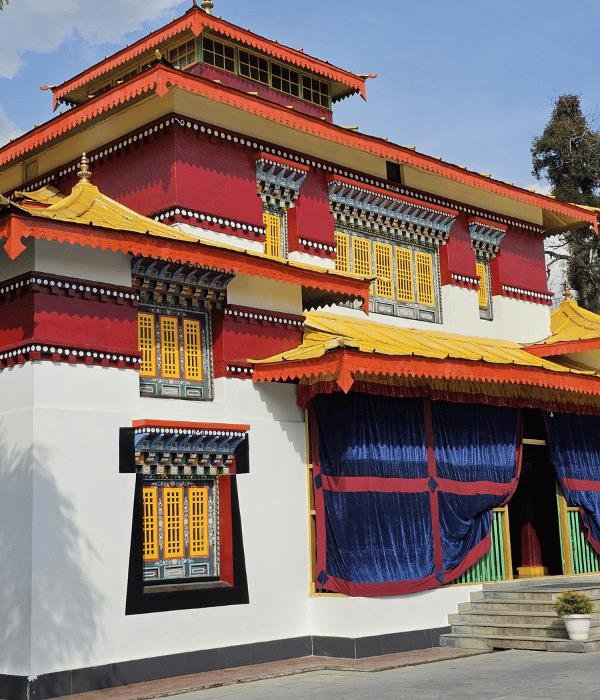
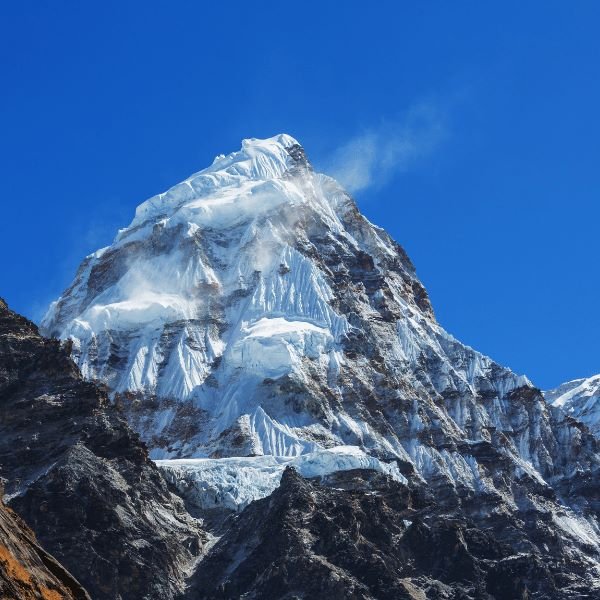
Kanchenjunga National Park
Named after the third highest mountain peak in the world, and nestled in the lap of the mighty Himalayas in North of Sikkim is the Kanchenjunga National Park. Included recently in UNESCO’s world heritage sites, it is a rare high altitude national park and the first “Mixed-Heritage” site of the country. Also spelt as Khangchendzonga National Park, at an elevation of 8586 meters, it lies partly in Nepal and partly in Sikkim. Unique in biodiversity, this place is a paradise for trekking with a diverse landscape and breathtaking views.The park, situated in the beautiful state of Sikkim, is sprawled across a vast area of 850 sq km and is home to most endemic and rare species of flora and fauna including the Snow Leopard and Himalayan Tahr. With the varying elevation of 1,829 m to over 8,550 m, the Kanchenjunga National Park adjoins Qomolangma National Nature Preserve in Tibet and Kanchenjunga Conservation Area in Nepal. There are numerous glaciers inside the national park with the Zemu glacier being the most significant one with an extravagant length of twenty-six kilometres.
South Sikkim

Surrounded by beautiful forests and majestic hills, South Sikkim is the perfect vacation spot for someone looking for a retreat in the midst of nature in its most natural form.The town of Namchi is the headquarters of South Sikkim and it is situated at an altitude of 5500 feet at a distance of around 100 kms fromÊGangtok. South Sikkim, since years has been famous for its monasteries and stupas and devotees flock to this town for its religious significance. But recently, this district has risen to the position of an eminent tourist destination. Ralang Monastery, Siddheswara Dham, Statue of Guru Rinpoche are among the popular attractions here.
Tendong Hill
Tendong Hill is a destination that offers you a marvelous view of the valley in Sikkim. Situated at an altitude of 8530 ft above Damthang, Tendong Hill is a very famous tourist attraction in the southern part of Sikkim. Due to its serenity and tranquility, Tendong had been the residence of Buddhist Lamas, who have spent years in meditation in the quiet and peaceful environment of the place. From the peak of Tendong Hill, the sight appears to be unbelievable. It seems phenomenally perfect and you will definitely not want to miss this on your trip to Sikkim.Tendong hill situated above Damthang and close to the South Headquarters town Namtse has transformed into a popular tourist destination of Sikkim. It can be reached only by trekking which starts from Damthang, a 13 kms drive from Ravangla. The trek passes through plush and thick green vegetation rich in rare flora and wildlife. Over 90 species of birds, Himalayan Bears, leopards and illusive Red Pandas are sheltered in this forest. Tendong Hill top is at a height of 8660 ft which provides a splendid panoramic sight of the eastern Himalayas and this hill is an inactive volcano. A petite and beautiful monastery and a three storied watch tower are on the top of this hill. From the watch tower a 360 degree view of Sikkim is breath-taking. No other place in Sikkim provides such a great view of the entire range. The majestic Kanchenjunga peak glitters like gold from here. The entire Singalila range in the west, Chola range in the east, part of Gangtok town, Nathu La, Darjeeling and part of the plains of West Bengal are visible from here.
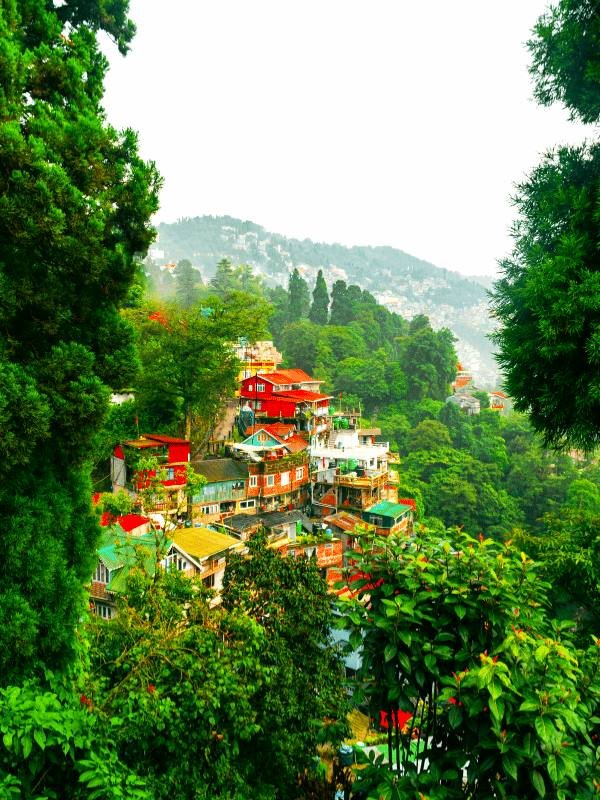

Statue of Guru Rinpoche
This giant statue of Guru Rinpoche is located in Namchi and is 118 ft. in height. Guru Rinpoche’s actual name was Padmasambhava and is also known as Second Buddha.He is said to have transmitted Vajrayana Buddhism to Tibet, Bhutan and surrounding area in the 8th century AD. He is also considered to be the emanation of Buddha Amitaha, Shakyamuni Buddha and Kuan Yin Bodhisattva.
Siddheshwara Dham
This place was recently developed by the Sikkim Government to promote tourism in South Sikkim. It houses replicas of four Dhams (Badrinath, Jagannath, Dwarka and Rameshwaram) at one place at Solophok hilltop in Namchi.It also has a 108 ft statue of Lord Shiva. There are replicas of the 12 jyotirlingas as well in this area. A temple for Sai Baba and a statue of Kirateshvar Mahadev is also built here. Tourists can also avail the accommodation facility here at Yatri Niwas.
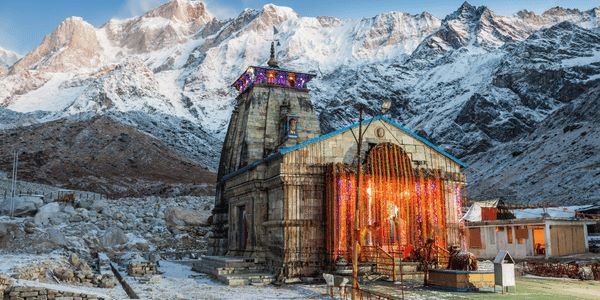

Namchi
Namchi, the district headquarters of the South District, is a prosperous market town which has quickly developed into a tourist hotspot. Namchi literally means “Top of the Sky” and the main tourist attractions of Namchi are the two gigantic statues. These two gigantic statues are facing off from opposite hillsides across Namchi and attract several tourists every year. Set in a scenic environment, Namchi provides you a beautiful view of the Khangchendzonga range and the Rangit valley. You can also visit the Sherdup Choeling Monastery and the Dichen Choeling monastery over here.Namchi is the capital of the South Sikkim district which is quickly transforming into a tourist hotspot because of its pilgrimage centres. The world ‘s largest statue is also situated here and is worth seeing. A number of luxury hotels are being setup in Namchi and the existing ones have good facilities for you to enjoy a comfortable stay. The spas and the bars in this town are very relaxing for the tourists. Around two kms from Namchi is the old Ngadak monastery. Positioned on a hill just above Ngadak monastery is the very striking Rock Garden which makes a great tourist attraction because of the several unique flowers and plants which blossom every spring.

